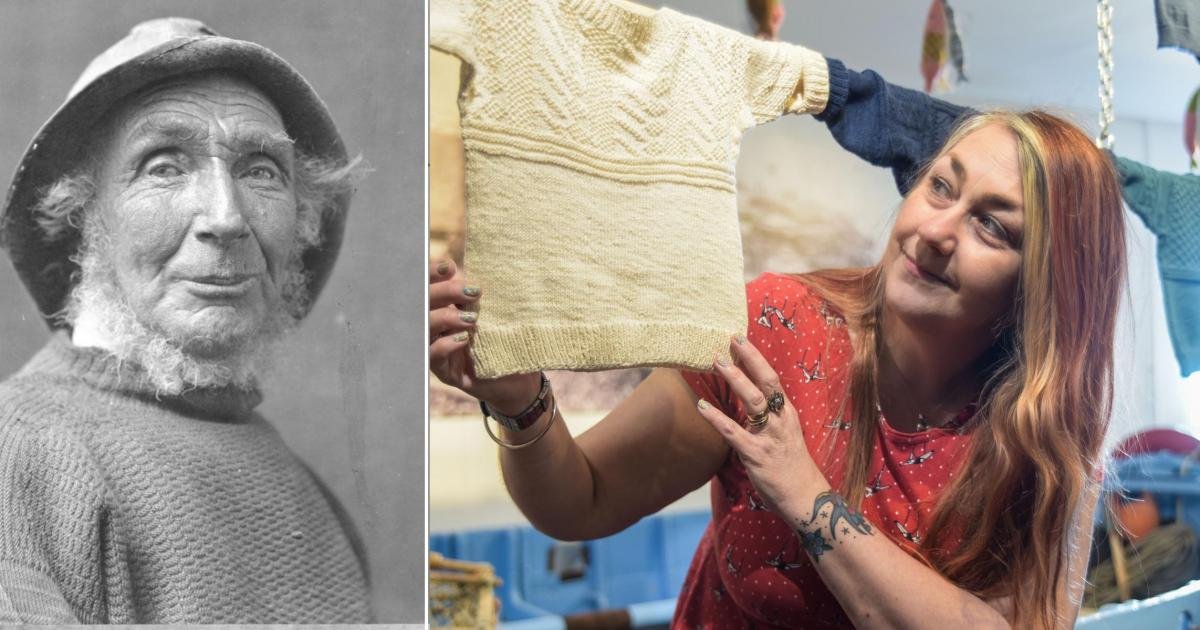
Before the days of Gore-Tex, Sheringham fishermen relied on tightly knitted woollen jumpers called ganseys to protect them from the cold wind and spray of the North Sea.
The knowledge of how to make these jumpers was almost lost.
However now a project at Sheringham Museum to research and record the area’s traditional ganseys has helped remove the craft from the Heritage Crafts Association’s endangered list.
Curator Lisa Little and volunteer Lesley Lougher started the project to highlight the fineness of the garments and the skill of Sheringham’s prolific knitters.
The museum is also home to the Olive Edis photography collection, a treasure trove of early 20th-century images of local fishermen.


Heavy, close-fitting jumpers, ganseys are known for their exceptionally fine gauge, sometimes up to 14 stitches per inch.
READ MORE: Beloved 1960s playground horse back where it belongs
Traditionally navy in colour, they were worn for fishing, but many would also wear a “best” gansey for church or special occasions.
The oldest in the museum’s collection dates back to around 1888.

Around 60 to 70 child-sized ganseys have been knitted for visitors to handle and examine, giving them a tactile sense of the stitches, patterns and construction.
“We’re always looking for new knitters to join in,” said trustee Ruth Yates.
“Some people knit swatches, others work on mini ganseys for display.
“It’s a great community, you can ask questions, share progress and learn from each other.”


Work is now focused on 12 fishermen from a historic group portrait.
Using Ms Edis’s images, the team is charting each stitch pattern to create accurate replicas for a book and an online archive.
Ganseys were once the “high tech” workwear of their day – windproof, water resistant and hard wearing.
They were knitted in the round with underarm gussets for ease of movement, three quarter length sleeves to avoid getting wet when gutting fish, and no seams, meaning they could be unravelled and re-knit if worn thin.
Patterns often reflected nautical themes such as rope coils, net mesh and hailstone stitches.
While some romantic tales suggest patterns helped identify drowned fishermen, Ms Little says this is mostly myth: “Patterns spread along the coast with the herring girls and other knitters.


“People borrowed ideas they liked and made them their own.”
Sheringham’s gansey tradition lasted well into the 1970s, before synthetic waterproof clothing took over.
The museum also holds the research archive of Michael Harvey, whose 1978 book Fishermen’s Knitting helped spark a revival of interest in the craft.
International Gansey Day, held each November, is now the museum’s busiest day. Hundreds of visitors come to see displays, attend workshops and share stories.
This year’s event will be held on November 22.


And the team is always keen to hear from people who think they might have a traditional gansey at home, no matter the condition.
They are also knitting sample children size ganseys for an upcoming exhibition which will later tour. Patterns and yarn are provided for those who want to join in.
For more information or to get involved, visit the East Anglia Gansey Group Facebook page or Sheringham Museum’s website.











